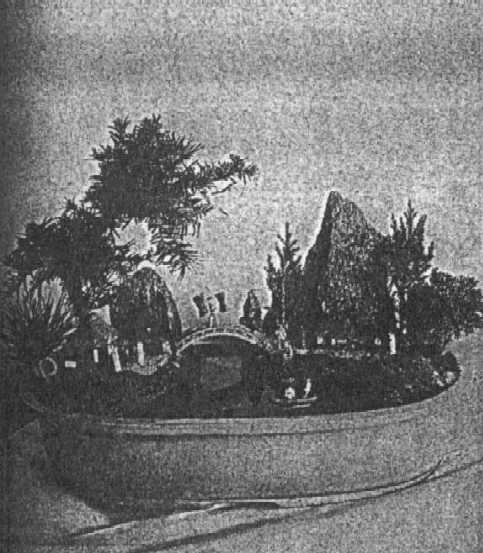| "Making Japanese
Miniature Gardens" (1920):
The miniature garden industry in
Japan has been transplanted to the United States. For several centuries
the leading landscape gardeners of Japan have made miniature models of
their work so their customers might see how the proposed gardens would
look; very much in the same way an American architect will make a prospective
drawing of a house, except in this case the garden is made perfect in every
detail, except that it is in miniature.
For a number of years an annual
contest or exhibit of these toy gardens has been held in the city of Kioto,
at which the leading landscape gardeners of Japan exhibit their work.
A great demand has grown up among the tourists who visit the land of the
cherry blossom for copies of these miniature gardens to take back with
them to America.
|

